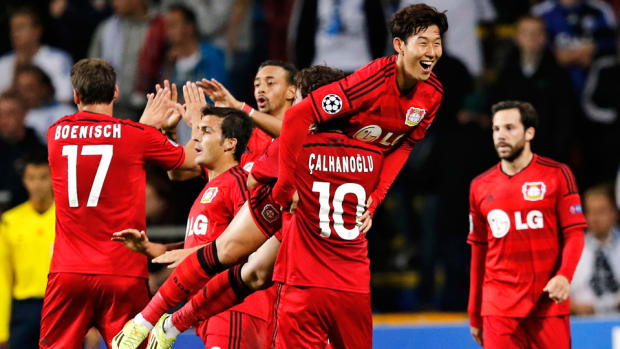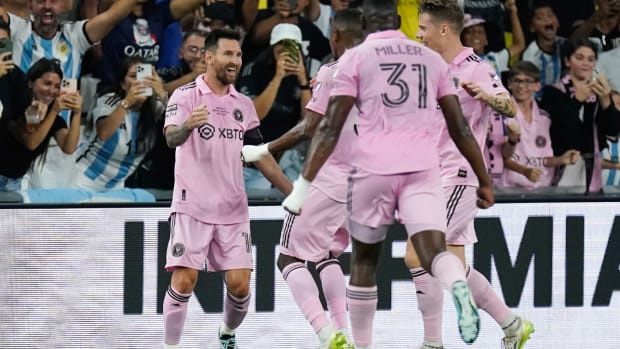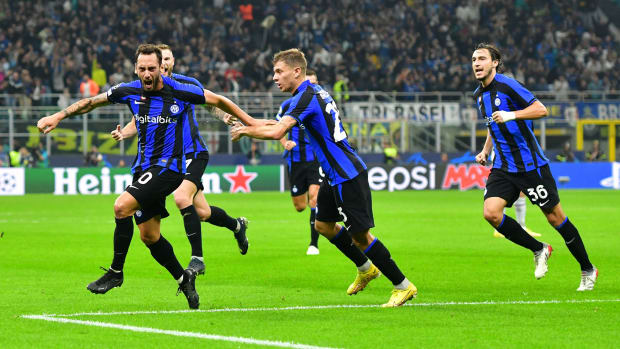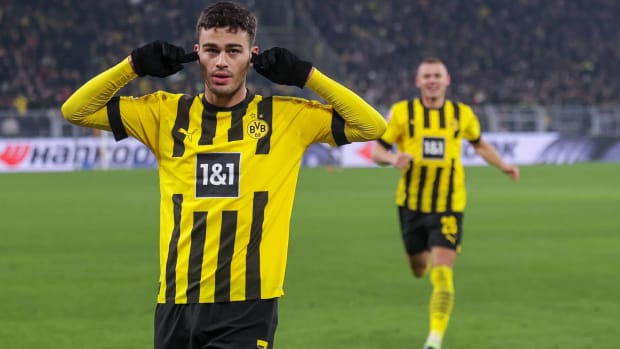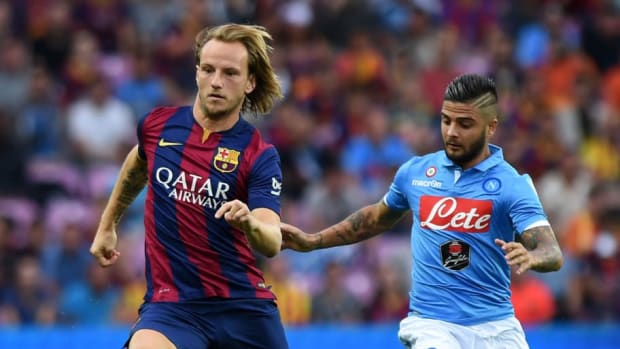Kansas City's Royals Swing for Fences With Trademark Claim vs. NWSL's Utah Club
Are two pro sports teams named “Royals” and that similarly feature a crowned lion one team too many?
This question lies at the heart of a federal trademark dispute over whether the NWSL's Utah Royals FC should be able to gain trademark protection for “Royals” when the Kansas City Royals already trademarked “Royals” and registered more than three dozen other marks connected to this word.
To that end, the Kansas City Royals have filed a notice of opposition in the U.S. Patent and Trademark Office (a.k.a. the USPTO, the government agency that administers the national trademark registry) arguing that the NWSL should be denied the opportunity to register “Utah Royals FC” as well as their version of a lion and crown logo.
The club Utah Royals FC was established in December 2017 and just completed its first season in NWSL. It took the place of the defunct FC Kansas City, which ceased operations and had its player contracts and other assets transferred to the new franchise. It was not a strict relocation, but there is a link between the new franchise and its old city. Utah businessman Dell Loy Hansen is the Royals’ owner, bringing the club into the Utah soccer umbrella he has formed along with MLS's Real Salt Lake and USL's Real Monarchs.
The Kansas City Royals, by contrast, were established 49 years ago. Despite their regal-sounding name, they were named after livestock, not the British monarchy or any other political dynasty. They are currently owned by former Walmart CEO David Glass. These two teams have no relationship other than (1) sharing the name Royals and (2) linking that name to a crowed lion. Both teams’ use of crowned lion imagery is hardly original—such imagery traces back to the Lion of the Tribe of Judah in the Bible.
Rape Allegations vs. Cristiano Ronaldo and the Many Legal Layers to a 9-Year-Old Case
The Kansas City Royals contend that consumers are likely to be confused into believing that the Utah Royals’ “goods and services” are endorsed, sponsored or otherwise affiliated with the Kansas City Royals and that the USPTO granting trademark protection to the NWSL would harm the Kansas City Royals. The phrase “goods and services” has important contextual meaning in this dispute. Both teams offer one form of sports entertainment within the highest-level pro league for each respective sport. Both teams’ services extend further to include hosting clinics, workshops, volunteer events and other activities commonly sponsored by major professional sports teams. Likewise, both teams sell shirts and other assorted apparel items. Both also retail various merchandise, such as mugs, keychains and toys, adorned with their respective team name and logo.
In other words, while the two teams play different sports and employ world-class athletes of the opposite sex, they are engaged in the same industry of major professional American sports and they sell similar things.
Under trademark law, the USPTO will consider the extent which the NWSL’s registration would bring about confusion among consumers and wrongfully imply a link between the two teams. The fact that no ordinary fan would mistakenly believe that his or her Utah Royals ticket would result in watching in a baseball game is not the relevant legal test. Instead, the USPTO will examine whether a consumer, upon looking at teams’ images and assessing how they are used, would conclude that the teams are associated.
The Kansas City Royals imply that any perceived association between the two teams would benefit the Utah Royals far more than the Kansas City Royals and also run the risk of diminishing the value of the Kansas City Royals brand. As the Kansas City Royals note in their notice of opposition, they have a long and storied history that includes two world series championships (1985 and 2015), six members of the National Baseball Hall of Fame and the first modern-day player to become an all-star at the professional level in two sports (Bo Jackson, who also played for the NFL's Los Angeles Raiders). The Utah Royals, in contrast, have just started and have no established history.
So how similar are the two teams’ imagery? Here are the respective logos for each:
You’ll notice the colors—the Utah Royals in cobalt blue, red and victory gold and the Kansas City Royals in royal blue, white and gold—are to some extent unique. Also, the font type for each reference to “Royals” is very different. Likewise, the two crowns are designed and decorated dissimilarly, and only one crown ascends above a depiction of a lion. Both logos, however, similarly convey a regal appearance. In addition, and as the Royals insist, the Kansas City Royals have become synonymous with “Royals.” One might conclude, then, that any attempt by a pro sports team to use “Royals” would in reality be an attempt to free ride off of the goodwill of the Kansas City Royals’ brand.
Not so fast, the Utah Royals would argue. They charge that its association with Real Salt Lake–which has established the 'Royal' theme across its brand on the men's side from MLS to USL without issue–is very relevant in this legal analysis.
RSL, the Utah Royals stress, have used “images of a lion, crown, and a mascot known as Leo the Lion since 2005.” Yet, according to the Utah Royals, “Major League Baseball has never suggested a likelihood of confusion or otherwise sought to challenge such use in some 13 years.” As the Utah Royals implicitly ask, why would the Kansas City Royals find one use of a crowned lion problematic but not another? The Kansas City Royals might respond by noting that the Utah Royals’ use of a crowned lion is problematic because they share the same team name, whereas Real Salt Lake does not.
The Kansas City Royals also emphasize that they feature a lion mascot, which, when coupled with visual similarities between the Utah Royals and the Kansas City Royals, could lead consumers into confusion. This mascot is named “Sluggerrr,” who is described on the Kansas City Royals’ website as a “loveable lion” (for sports law fans, Sluggerrr is the same mascot who was the subject of a multi-year litigation involving a fan injured by a flying hotdog shot by Sluggerrr using an air cannon—I discuss that lawsuit in an SI piece on a separate lawsuit involving the Minnesota Timberwolves’ mascot, Crunch). Notice that Sluggerrr’s head is, in fact, a crown:
Alexandra Roberts, a trademarks law professor at the University of New Hampshire School of Law who has written extensively on sports trademark litigation, shared insight with SI.com on how the USTPO will determine whether there is a likelihood of confusion. She notes that the degree of “similarity of the goods and services” will prove critical. She adds that the USPTO will place emphasis on the fact that the two teams compete in different sports in different leagues.
To that point, Roberts stresses that “a number of professional sports teams share names or logos with teams in other leagues without generating confusion—MLB and NFL each has a team called the Giants; NHL and MLB each has its own Rangers; multiple pro sports teams share the names Cardinals, Kings, Jets, and Panthers without too much trouble.” For that reason, Roberts asserts, “it is not unreasonable to expect consumers to distinguish among two teams known as the Royals the same way they distinguish among the two teams called the Jets, especially given the teams’ non-identical logos.”
Evidence of actual—as opposed to theoretical—consumer confusion will also prove influential.
“The bottom line,” Roberts contends, is simply to ask: “Are consumers who encounter goods or services sold under the soccer team’s marks likely to be deceived or confused as to whether some connection exists between it and the baseball team, whether that means mistaking merchandise bearing one team’s mark as being associated with the other or simply presuming the existence of a license agreement where none exists?”
Roberts isn’t certain of the answer at this stage of the legal process. However, she adds, “right now my money is on the women’s team.”
The most likely outcome is that the two Royals teams work out a settlement where they agree to co-exist using the Royals name. This is exactly what occurred the recent trademark dispute between the NHL’s Las Vegas Golden Knights and the U.S. Army’s official parachute team, which is nicknamed the Golden Knights. A settlement would likely involve both Royals reaching an agreement on appropriate licenses for the use of the relevant name and imagery.
In the meantime, legal arguments by the two Royals will be reviewed by a panel of three Trademark Trial and Appeal Board administrative judges. Absent a settlement between the teams, the judges will eventually publish a written decision. Such disputes can take many months and sometimes even a couple of years to play out.
To be clear, this trademark dispute does not force the Utah Royals to give up its name while it battles with the Kansas City Royals. Trademark registration is important because it supplies certain rights, including those that help a company prevent counterfeit goods. However, the absence of registration neither requires a company to abandon a mark nor prevent the company from turning to other sources of law—such as state laws and court decisions—for legal protection.
Michael McCann is SI’s legal analyst. He is also Associate Dean of the University of New Hampshire School of Law and editor and co-author of The Oxford Handbook of American Sports Law and Court Justice: The Inside Story of My Battle Against the NCAA.


